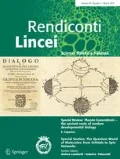Abstract
The paper starts off by defining cultural heritage and how the concept has extended over time. Then, after attesting to the fragility of our heritage, it continues with the awareness of the need to enable its transmission to posterity. It pinpoints a change in the philosophy of preservation practices, with the preference of prevention over intervention. Then it goes on to define the contribution of geomatics to knowledge, seen as a prerequisite to any decision-making, and to outline the models produced by the techniques classified as part of geomatics: discrete and continuous models, with different balances between the accuracy and efficacy of the descriptions. Some considerations follow on the geomatics tools and techniques now available to document the cultural heritage, with particular reference to the possibility of recording high-resolution data and integrating information from different sensors. The problems presented are illustrated with some examples of applications and the paper concludes by identifying some current research topics.







Similar content being viewed by others
Notes
For full information on this question, it is pointed out that in 2003 UNESCO drew up a Convention for the Safeguarding of Intangible Cultural Heritage.
"Codice dei beni culturali e del paesaggio", Italian law n. 42, 22/01/2004.
Carta del Rischio, by Istituto Superiore per la Conservazione (MIBAC Italian Ministry) http://www.cartadelrischio.it/.
The Risk Map introduces the term “iconometric model” to define such a system.
The “Guidelines for the Assessment and Reduction of Seismic Risk” set out in Directorate-General of the Italian Ministry of Cultural Heritage and Activities circular n. 26 (2 December 2010) go in the same direction.
“In all works of preservation, restoration or excavation, there should always be precise documentation in the form of analytical and critical reports, illustrated with drawings and photographs.” [Art. 16, Venice Charter, 1964].
Data can be acquired with different accuracy properties, depending on a lot of parameters; some of them are related to the instrument model, others are related to its set up. In the present case study a HDS6000 (by Leica Geosystems) laser scanner has been used.
Resolution is the smallest variation that can be recorded by the measuring tool on the basis of its technical characteristics or operating settings.
References
Baronio G, Guzzetti F, Lombardini N (1997) Considerazioni sui materiali e sulla geometria della cupola di San Vitale a Ravenna. In: Ravenna Patrimonio dell’Umanità, Quaderni di Soprintendenza, vol 3. Ravenna, pp 23–28
Brandi C (1963) Teoria del restauro. Edizioni di Storia e Letteratura, Rome
Bryan PG, Corner I, Stevens D (1999) Digital rectification techniques for architectural and archaeological presentation. The photogrammetric record
Crippa B, Mussio L (2014) Compagni!!… Tutti insieme cresciamo. In: Barriot JP, Sansò F (eds) Il Prof. Sansò e lo sviluppo della geodesia in Italia, Newton’s Bulletin, Milan
Cultural heritage and landscape code (Codice dei beni culturali e del paesaggio), Italian law n. 42, 22/01/2004 (online: http://www.normattiva.it/uri-res/N2Ls?urn:nir:stato:decreto.legislativo:2004-01-22;42@originale. Accessed Oct 2014)
Deichmann FW (1969) Ravenna. Hauptstadt des spätantiken Abendlandes, Wiesbaden-Stuttgart
Letellier R, Schmid W, Leblanc F (2007) Recording, documentation, and information management for the conservation of heritage places. Donhead, Shaftesbury
Lombardini N (1997) Contributo alla conoscenza della chiesa di San Vitale a Ravenna : la tecnica costruttiva, i materiali, la struttura, Dissertation, Milan Polytechnic, Universities of Genoa, Reggio Calabria, Cagliari
Migliari R (2004) Per una teoria del rilievo architettonico. In: Migliari R (ed) Disegno come modello, Kappa, Rome (ed)
Mirabella G, Lombardini N, Falter H (1995) Late roman domes in clay tubes: historical and numerical study of San Vitale in Ravenna In: Proceedings of IASS Symposium, Milan, pp 1237–1244
Sanpaolesi P (1973) Distruzioni per eventi bellici. In: Discorso sulla metodologia generale del restauro dei monumenti, Firenze, pp 58–61
Urbani G (1976) Premessa del progetto esecutivo. In: Zanardi B (ed) Istituto Centrale del Restauro. Piano pilota per la conservazione programmata dei beni culturali in Umbria. Progetto esecutivo. Tecneco s.p.a., Rome. Published in: Giovanni Urbani. Intorno al restauro, Skira, Milan, pp 103–105 (2000)
VV. AA. (1964) International Restoration Charter (a.k.a. Venice Charter), resolution of the Second International Congress of Architects and Technicians of Historical Monuments, in Venice, May 25–31
VV. AA. (1967) Per la salvezza dei beni culturali in Italia. In: Atti e documenti della Commissione d’indagine per la tutela e la valorizzazione del patrimonio storico, archeologico, artistico e del paesaggio, Casa editrice Colombo, Rome
Author information
Authors and Affiliations
Corresponding author
Additional information
Peer reviewed version of the paper presented at conference on Geodesy and Geomatics held at Accademia Nazionale dei Lincei in Rome on June 3, 2014.
Rights and permissions
About this article
Cite this article
Tucci, G., Bonora, V. Geomatics and management of at-risk cultural heritage. Rend. Fis. Acc. Lincei 26 (Suppl 1), 105–114 (2015). https://doi.org/10.1007/s12210-015-0427-0
Received:
Accepted:
Published:
Issue Date:
DOI: https://doi.org/10.1007/s12210-015-0427-0




